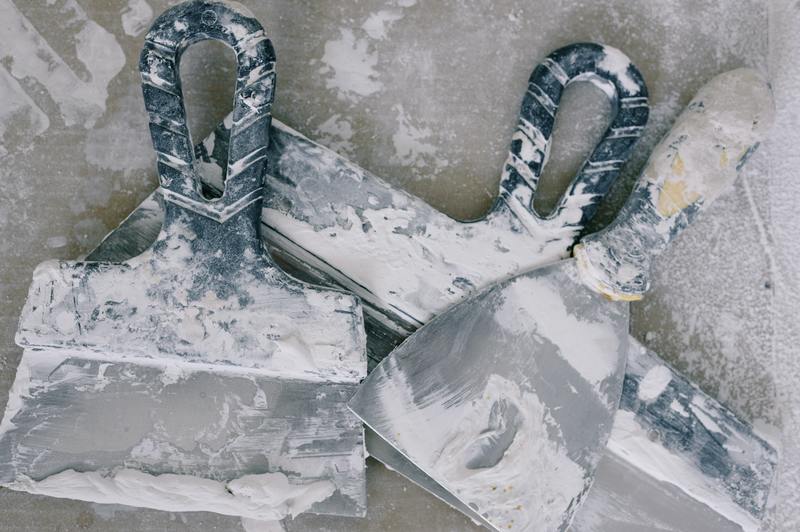If you want to know what is paint damaged by water called, it is called flaking or peeling paint. We’ll explain this more later.
We also included the signs of water-damaged paint in this article. Apart from the ones mentioned above, we’ll also tackle how to fix water-damaged paint.

What is flaking or peeling paint?
Flaking and peeling are both used to describe water-damaged paint. However, they still have their differences.
Flaking is preceded by cracking, and it is the detachment of small pieces of paint. On the other hand, the separation of large portions of paint is called peeling.
Multiple things can cause both flaking and peeling. However, both may happen due to extreme moisture on your walls or furniture and improper application.
Flaking and peeling paint are more of a symptom of a bigger problem in your home. Most of the time, water damage does not only affect your walls’ or furniture’s paint.
In severe cases, it can even affect the structure of your home. If you need help identifying water-damaged paint and water damage in general, read the next part of the article.
Signs Of Water Damaged Paint
Water stains
Water stains or water rings on the walls, ceiling, or pieces of furniture are an obvious indication of water-damaged paint. The worst part is that these water stains affect the paint of the walls and the ceiling.
If the water rings are evident on the walls and the ceiling, that means the material that the paint is adhering to is likely to be affected by water damage. If you see dark stains, that means the damage is relatively new. However, if the marks look yellowish or brown, then that means it has been there for a while.
Bubbling and cracking paint
Cracking precedes flaking, so it is only natural that this is one of the signs of water-damaged paint. We have a tip to know where the water damage came from: if the paint is cracked and flaking, then it means that the damage was from the outside. If there is bubbling then peeling, then the damage is from the inside.
Damp odor
This is a general sign of water damage. However, it is still essential. Also, when a musty smell is present, there is likely to be mold.
Mold
Mold thrives in water-damaged environments. While you may have been warned of the dangers of black mold, white and grey molds are still a threat to your home.
A sudden increase in water bills
Your water bills may dwindle per month. However, if you suddenly have higher water bills to pay, then have your home checked for a leak. This means that the leak has probably been going on for a long time to affect your bills significantly.
Can you paint on water-damaged paint?
Not directly after you remove the damaged paint, but it is possible. First, you have to ensure that the drywall or the surface your paint is adhering to is not weakened. If so, you have to mend that first.
Moreover, you have to look for the cause of water damage. Otherwise, you are going to reencounter water-damaged paint.
Apart from the two mentioned above, you also have to make sure the area is clean to be able to repaint your walls or furniture. This is because improper application of paint can also result in flaking and peeling paint.
How To Fix Flaking Or Peeling Paint
Note that before cleaning and proceeding with your painting project, you have to document the water damage in your home to strengthen your insurance claim. We recommend that you coordinate with your lawyer regarding your insurance claim so they can polish it.
Lastly, contact your insurance company to clarify if the water damage in your home is included in your insurance coverage.
Step #1. Clean the area
Clean the affected area first before starting. You can use sugar soap to help in the cleaning process and help the paint adhere to the surface it’s meant to adhere to.
Allow the sugar soap to dry, then remove the flaking and peeling paint. Use a scraper to smoothen the surface.
Step #2. Sand and seal
The surface has to be smooth, so you must sand it down. After smoothing the surface, apply a sealant to protect the space from water damage. Let the adhesive dry.
Step #3. Fill with filler
After applying the sealant, coat the surface with filler to further smoothen the surface. This takes a whole day to dry. After the filler has dried, you still have to sand the area.
Step #4. Prime and seal
After the filler has been sanded down, prime the surface to prepare it for paint. You can use a water-based primer for your interior surfaces. Let the primer and sealant dry before applying paint.
Step #5. Paint
After countless preparation, you can now apply paint to your surface.
Conclusion
If you reached this part of this flaking or peeling paint article, then you know more than what is paint damaged by water called. You also know the signs and how to repair them, so congratulations!
